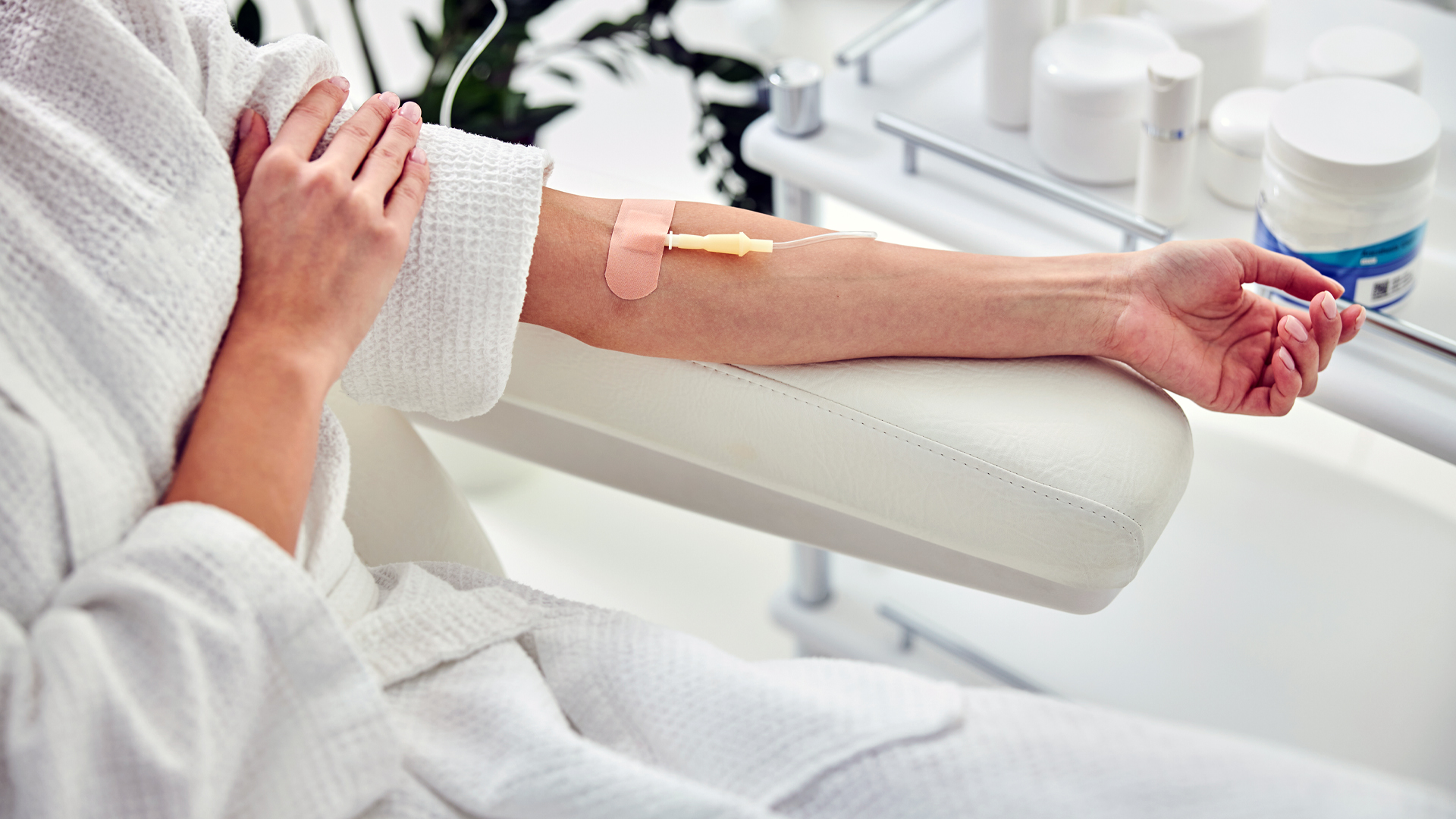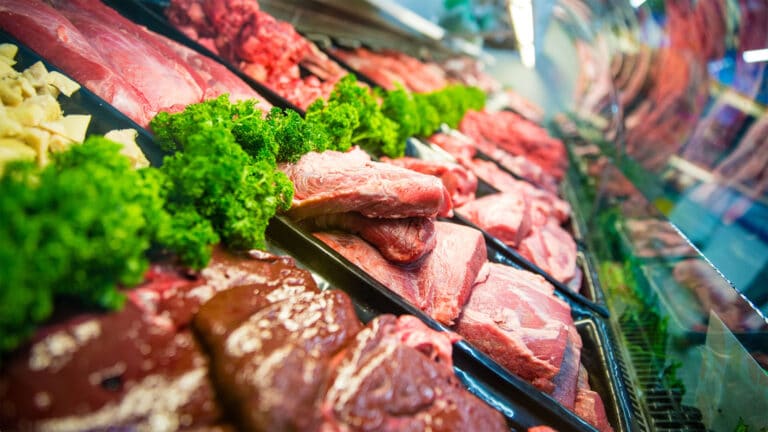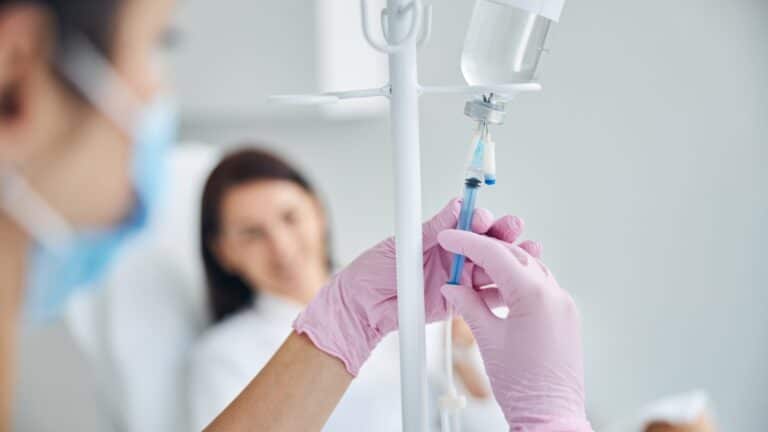What is NAD?
NAD (nicotinamide adenine dinucleotide) is a coenzyme found in all living cells. It plays an important role in metabolism as it enables the transfer of energy from the foods we eat to vital cellular functions, especially in the brain.
NAD levels decline naturally with age, but even more from lifestyle choices, poor diet, use of drugs/alcohol, stress, toxins, and a host of other factors.
Fortunately, NAD can be restored through intravenous (IV) NAD+ infusions, supplements like Nadovim, and diet and lifestyle modifications. But before we dive into the simple (and free) lifestyle changes to support NAD levels, here’s more on this mighty molecule.
The Different Types of NAD
NAD comes in different forms, each with its own benefits. NADH is the most common form, as it is what your body uses to produce energy. NADPH is another form of NAD and it helps your body produce chemicals needed for growth and development.
But NAD precursors are what’s typically found in supplements and these include Nicotinamide (Nam), Nicotinamide riboside (NR), and the recently-banned molecule, Nicotinamide mononucleotide (NMN), which has been targeted for its potential to treat age-related diseases. However, NAD+ is the key end-goal molecule that produces the beneficial biological effects desired in the body.
Lifestyle Factors to Increase NAD Levels
Supplements and IVs aside, lifestyle choices are the simplest (and likely most affordable) way to increase NAD levels naturally. These include eating foods high in NAD, fasting, exercise, and sleep.
Here’s What to Eat for NAD+
Although NAD+ levels can decrease through eating, especially over-eating, they can be improved through food as well. Milk, eggs, beef, lamb, salmon, and asparagus are a few staples to boost your NAD+. Below is a more comprehensive list of foods shown to boost NAD plus the quantity of each needed to see an increase:
- Dairy milk (3.9 μmol/liter)
- Fish such as sardines, tuna (20 mg/serving), salmon (10 mg/serving)
- Crimini mushrooms (3.3mg/cup)
- Chicken, eggs, pork, beef, turkey (10 mg/serving)
- Yeast (10 mg/serving)
- Green vegetables like asparagus, broccoli, kale, peas, spinach (3-4 mg/cup)
- Whole grains such as whole wheat, brown rice (1 cup)
- Sunflower seeds, pine nuts, chia seeds, peanuts (0.5 cup)
- Fruits like avocados, bananas, guavas
Fasting to Increase NAD Levels Naturally
Food may increase NAD+ levels when eaten in moderation. But raising NAD levels through fasting more directly stimulates cellular health, DNA repair, and energy and cognition. Fasting, or time-restrictive eating, has become very popular in recent years for its purported benefits on weight loss, muscle growth, metabolism, balancing blood sugar, and even improving sleep and mood. But several studies show that calorie restriction can raise our NAD+ production and as a result, lengthen our lifespan.
How Does It Do This?
When we fast, we enter a state of mild starvation that suppresses a particular enzyme that consumes both NAD+ and its precursor, NMN. This enzyme (called CD38, if you were wondering,) is predominantly generated when we are inflamed, as well as when sirtuins are diminished in our mitochondria (a sign of oxidative stress).
But by lowering inflammation and oxidative stress through fasting, we reduce our NAD+ expenditure and promote its production by burning up NADH, the reduced form of NAD+. When our bodies use NADH to create energy, our biology understands that more NAD+ needs to be produced to keep these molecules properly balanced.
How Much Fasting is Too Much?
Studies on time-restricted eating have shown that eating within an 8-hour window or less confers a higher expression of autophagy, sirtuin activation, and insulin sensitivity compared to eating over the course of 12 hours or longer. However, there is a point of diminishing returns when routinely fasting for 24 hours or longer.
Exercise & NAD
Physical exertion causes heat and muscle contractions – which lower your NADH levels (the reduced form of NAD+). By lowering your NADH levels you spur the production of NAD+, rebalancing your NADH/NAD+ ratio.
A higher ratio of NAD+ to NADH results in a greater amount of readily available energy – as well as the improved ability of your cells to easily produce energy.
Conversely, an abundance of food will raise one’s NADH levels and lower NAD+ production. It takes mild stressors like exercise, some mild ketosis, and of course fasting to reduce NADH and prompt NAD+ production.
How Much Exercise is Required?
Studies show that regular exercise will help to decelerate the deleterious effects of the aging process by helping the body produce more NAD+. But between aerobic and anaerobic (resistance training), both have shown benefits in clinical research, yet must be performed at 70-75% of VO2 peak for a total of 180 minutes per week–which required aerobic training 3-4x per week and at least 45 minutes of resistance training 3x per week.
Sleeping for NAD+
It’s a two-way street: NAD promotes healthy sleep, and poor sleep depletes NAD.
Sleep deprivation and sleep disorders are well-documented as contributing to various ailments, from insulin resistance, weight gain, and obesity, to depression, and anxiety, as well as many neurodegenerative diseases. In short, sleep is important.
And as the majority of the body’s repair occurs when we’re sleeping, poor quality or insufficient sleep also lowers the body’s ability to efficiently utilize NAD+.
Conversely, NAD plays an important role in regulating circadian rhythm (our sleep/wake cycles). Yet, changes to our sleep-wake cycle occur as we age: the older we get and the less NAD+ we naturally produce, the earlier we bed go to bed at night and the earlier we rise in the morning.
However, in a study in Molecular Cell, it was found that when subjects (of a certain age) were administered exogenous NAD+, they not only had more energy during the day but also avoided the early evening energy dips compared to controls, and had circadian rhythms more closely matching younger subjects.
Optimize your sleep and take your NAD+ production to the next level!

Let’s Talk NAD+ Infusions
What’s the fastest way to replenish NAD+? Through intravenous administration. Using the purest form of NAD+, intravenous infusions have been shown to be the most effective way to increase NAD+ levels.
Compelling research shows that NAD+ has a unique ability to protect and extend cell life, as well as:
- Protect tissues
- Induce DNA repair
- Replenish the balance of neurotransmitters
- Optimize mitochondrial function in the brain
- Improve mental clarity and cognitive function (focus and concentration)
- Increase activity of sirtuins, helping to increase metabolism, decrease inflammation, and prevent neurodegeneration
Since the 1960s, studies have continued to demonstrate the efficacy and safety of IV NAD in detoxifying patients from alcohol, opiates, tranquilizers, and stimulants. It’s no wonder then that NAD+ IVs have become a hallmark therapy at the New York Center for Innovative Medicine.
NAD+ doesn’t just support graceful aging, it also helps with DNA and cellular repair, boosting cellular energy levels, and improving muscle strength. So it’s a no-brainer to augment your diet with NAD-rich foods, get plenty of sleep, exercise regularly, and engage in the occasional fast.
* Disclaimer: The statements made in this article have not been evaluated by the Food and Drug Administration. Any products or treatments mentioned are not intended to diagnose, treat, cure, or prevent any disease. Please consult a licensed medical practitioner for medical advice. At Innovative Medicine, we believe in transparency. We want you to know that we may participate in affiliate advertising programs pertaining to products mentioned herein.





